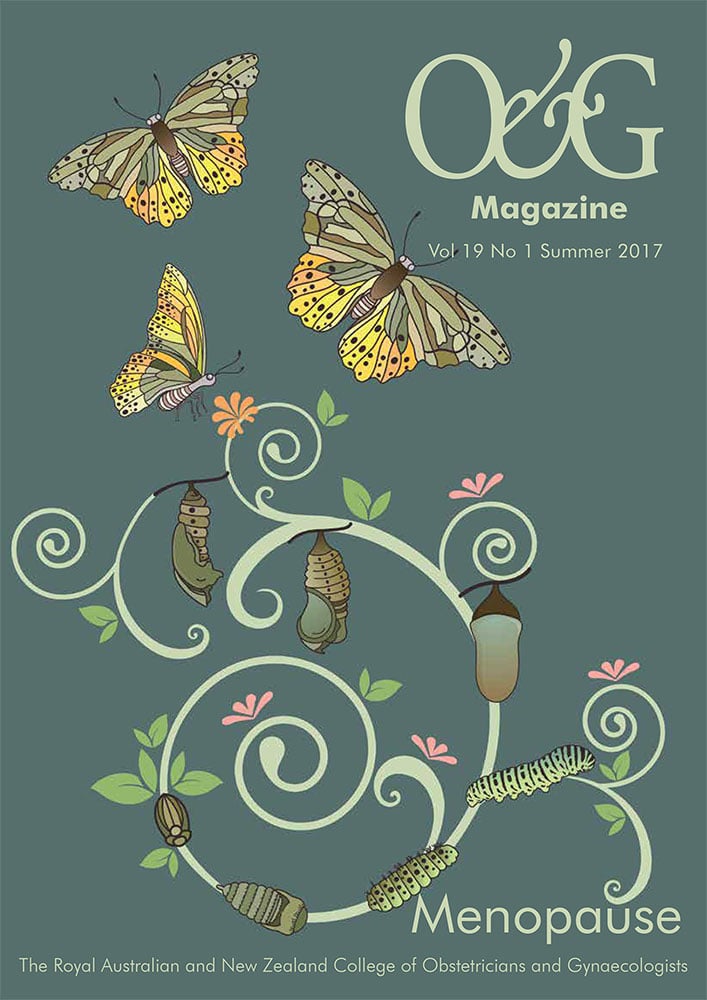Disorders of female sexual function are complex, clearly multifactorial in nature and often require multidisciplinary input. While psycho-social factors, such as relationship factors and mood, are very important and often play the dominant role, hormones are important contributors as well. This article provides a summary of some of the hormonal aspects of female sexual function at menopause. Although not covered here, when considering the role of hormones in a woman presenting with sexual problems, assessing the whole woman is very important. As well as a comprehensive social history, a thorough medical history is required to screen for other contributors to sexual problems, such as psychotropic medications.
The Study of Women’s Health Across the Nation (SWAN) was a longitudinal study of more than 3000 multiethnic American women followed through the menopause transition. SWAN found that the major changes in sexual functioning that occurred with menopause were:
- an increase in vaginal and pelvic pain with sexual intercourse
- a decrease in sexual desire
However, there was no significant difference in arousal, emotional satisfaction or physical pleasure.
SWAN, and other studies, demonstrate that problems with sexual function are very common at midlife, with low sexual desire being the most common complaint. Most research into the hormonal aspects of female sexual dysfunction have focused on hypoactive sexual desire disorder (HSDD). HSDD can be diagnosed when low sexual desire that causes personal distress is present and other causes have been excluded.
Testosterone
Testosterone is the hormone most researched in terms of sexual desire. In women, testosterone is made by the ovaries and by peripheral conversion of androgens made in the adrenal glands. While it is thought of as a male hormone, women in fact have more testosterone than oestradiol. Around two-thirds of serum testosterone is bound to sex hormone binding globulin (SHBG), one-third to albumin and 1 per cent is unbound. It is the unbound, or free portion, that exerts peripheral effects. Testosterone levels decline with age such that a woman in her 40s will have about half the level of a woman in her 20s. Menopause per se does not appear to dramatically alter testosterone levels, with the postmenopausal ovary still able to produce some testosterone. Women with surgical menopause, however, do experience a sudden reduction in testosterone levels of about 50 per cent. Likewise, women with adrenal insufficiency or primary ovarian insufficiency may also have lower testosterone levels.
There is an association between sexual desire and testosterone levels in some, but not all, epidemiological studies. There is, however, no testosterone level below which desire is always abnormally low or absent. Testosterone levels, therefore, are not useful in the diagnosis of HSDD.
There are several clinical studies of exogenous transdermal testosterone (TT) therapy for HSDD. The aim of TT therapy is to achieve serum testosterone levels in the normal range for a woman in her 20s.
The largest randomised controlled trial (RCT) included 814 naturally and surgically postmenopausal women randomised to TT-patch or placebo for 12 months. The TT group had an increase of one sexually satisfying event per month more than placebo. A recent meta-analysis of more than 5000 women supported this finding.
Small studies have also demonstrated efficacy in women with low desire due to selective serotonin reuptake inhibitors (SSRIs) and premenopausal women aged 35–45 with HSDD.
Transdermal testosterone therapy
In very high doses TT can cause acne, hirsutism, voice deepening, androgenic alopecia and cliteromegaly. With the low dose used to improve sexual desire, the most commonly reported side effect is hair growth, which may be at the site of application or in areas typically prone to androgenic hirsutism, such as the lip and chin. RCTs have demonstrated the short-term safety of testosterone, with data up to three years of use. TT (unlike older oral formulations) does not appear to affect lipids, glucose, breast density or cause endometrial thickening. Long-term safety, however, is limited to observational data, but there does not appear to be an increased risk of breast cancer associated with TT use.
How to use TT therapy
Who to consider it for: naturally or surgically menopausal women who report low sexual desire that causes personal distress; women who have decreased libido after starting an SSRI; older premenopausal women.
Who not to use it for: women with hirsutism, acne, androgenic alopecia; pregnant and breastfeeding women; women with a history of hormone dependent cancer due to unknown safety; premenopausal women who are not using fail-safe contraception due to the harmful effects on a developing fetus.
What to test: check testosterone and SHBG levels. This is not for diagnostic purposes, but to exclude high testosterone levels or low SHBG levels, either of which is likely to result in androgenic side effects if TT therapy is used. If serum testosterone is within the normal range or lower than TT, therapy can be used.
What to prescribe: TT therapy does not have Australia-wide approval for use in women. One prescription formulation is approved in Western Australia with RCT data in women (Androfeme, Testosterone 1 per cent cream, Lawley Pharmaceuticals) and can be ordered by mail. Off-label use of male formulations can be problematic, resulting in excessive dosing. Excessive dosing not only causes side effects, but also at higher doses, TT may lose its efficacy in improving sexual desire. The Endocrine Society of Australia and the Australasian Menopause Society do not recommend use of compounded hormones due to concerns regarding the risk of contamination and variability in dosing.
The dosage: the standard dose is 0.5ml of 1 per cent testosterone cream applied once daily to the thigh. Care must be taken to carefully wash hands after application to prevent unintentional dosing of others.
Monitoring: serum testosterone levels should be repeated after at least three weeks of use. If testosterone levels are above the normal range, a dose reduction may be needed. Once serum testosterone levels are established at the mid-high end of the normal range, levels should be checked at six and 12 months and then annually.
What to expect: for women in whom TT therapy is effective, it usually results in a subtle increase in desire. It usually takes several weeks for the effect to become apparent. In RCTs, TT therapy results in an increase of one sexually satisfying sexual event per month as compared to placebo. A significant number of women will be non-responders. If no effect is seen after six months of use, treatment should be ceased.
Oestrogens
The decline in oestradiol seen at menopause is responsible for vasomotor symptoms (VMS) and symptoms of vulvovaginal atrophy (VVA)/genitourinary syndrome of menopause. Sexual pain caused by VVA may lead to impairments of other aspects of sexual function, such as desire and arousal. Vaginal oestrogen therapy is highly effective in improving symptoms of VVA and improving sexual function.
There is no high-quality evidence that systemic oestrogen therapy improves sexual function over and above its effect on vaginal health and VMS. It is therefore not recommended that systemic oestrogen therapy be used for the treatment of low libido or impaired sexual function in the absence of other menopausal symptoms.
In summary, female sexual function during menopause is a complex topic. Transdermal testosterone therapy can improve libido in postmenopausal women. Vaginal oestrogen therapy is highly effective for the impairments to sexual function caused by VVA.
Further reading
Avis NE, Brockwell S, Randolph JF Jr, et al. Longitudinal changes in sexual functioning as women transition through menopause: results from the Study of Women’s Health Across the Nation. Menopause. 2009;16(3):442-452.
Davis SR, Worsley R. Androgen treatment of postmenopausal women. Journal of Steroid Biochemistry and Molecular Biology. 2014;142:107-114.
Davis SR, Worsley R, Miller KK, Parish SJ, Santoro N. Androgens and Female Sexual Function and Dysfunction: Findings from the Fourth International Consultation of Sexual Medicine. Journal of Sexual Medicine. 2014;13(2):168-178.
Santoro N, Worsley R, Miller KK, Parish SJ, Davis SR. Role of Estrogens and Estrogen-Like Compounds in Female Sexual Function and Dysfunction. Journal of Sexual Medicine. 2016;13(3):305-316.
Elraiyah T, Sonbol MB, Wang Z, et al. Clinical review: The benefits and harms of systemic testosterone therapy in postmenopausal women with normal adrenal function: a systematic review and meta-analysis. J Clin Endocrinol Metab. 2014;99(10):3543-3550.
Goldstein I, Kim NN, Clayton AH, et al. Hypoactive Sexual Desire Disorder: International Society for the Study of Women’s Sexual Health (ISSWSH) Expert Consensus Panel Review. Mayo Clinic Proceedings. 2017;92(1):114-128.






A useful article to practising Clinicians especially in the Developing world.